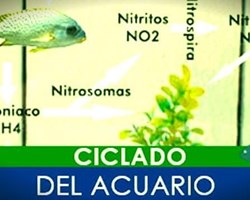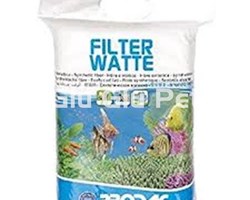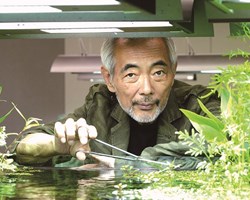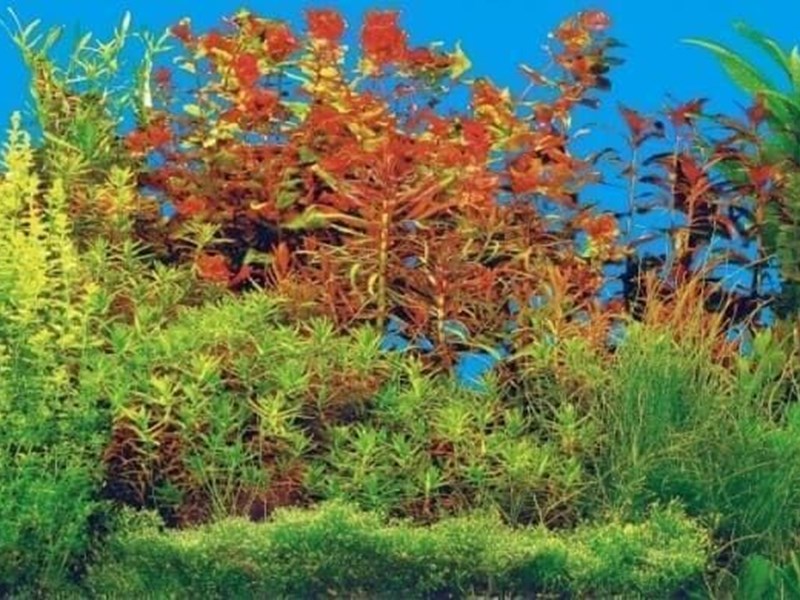
INDEX:
1.- PLANT SPECIES FOR COLD WATER AQUARIUM.
1.1.- EGERIA DENSA (ELODEA).
1.2. MYRIOPHYLLUM HIPPUROIDES.
1.3.- ELEOCHARIS PARVULA.
1.4.- GYMNOCORONIS SPILANTHOIDES.
1.5.- POTAMOGETON CRISPUS.
1.6.- HYDROCOTYLE VERTICILLATA.
1.7.- VALLISNERIA SPIRALIS.
1.8.- NUPHAR JAPONICA.
1.9.- SAGITTARIA PLATYPHYLLA.
1.10.- LUDWIGIA PALUSTRIS.
1.11.- LYSIMACIA NUMMULARIA.
2.- HOW TO PLACE THE COLD WATER PLANTS IN THE AQUARIUM.
1.- PLANT SPECIES FOR COLD WATER AQUARIUM:
1.1.- DENSE EGERIA (ELODEA):
Common Name: Elodea
Origin: USA Currently spread throughout the world.
Description: Resistant aquatic plant, with fine leaves and leafy appearance. It is fast growing and adapts to all kinds of conditions. It is considered an invasive species. They are cold water aquarium plants that should not be introduced into any natural habitat.
Maximum height: more than 50 cm.
Optimum parameters: Prefers slightly hard water, up to a gH of 20ºd. pH between 7 and 8.5.
Growth rate: Fast.
Aquarium zone: Bottom or middle.
Illumination:
Temperature: 18 to 26ºC. Preferably around 20ºC.
Reproduction: Adventitious shoots.
Difficulty: For beginners.
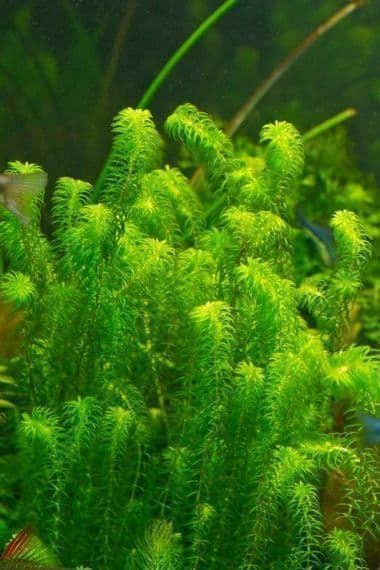
1.2. MYRIOPHYLLUM HIPPUROIDES:
Common Name: Water Pine
Origin: North America and Central America.
Description: Aquatic plants for cold water fish tanks listed as a "vulnerable" species by the IUCN. They need aquariums with completely clear water, without substrate particles or other debris that settle on the leaves and stems. Otherwise, it will become clogged and its ability to photosynthesize will decrease, and it may end up covered in algae. Each stem should be planted 5 to 10 cm apart from the rest. In high lighting the leaves acquire a beautiful yellowish tone. With these plants, continuous fertilization is more important than intense fertilization.
Maximum height: 50 cm.
Optimum parameters: pH from 6 to 8. gH from 1 to 16ºd.
Growth rate: Fast.
Aquarium zone: Bottom or middle.
Illumination: High to very high.
Temperature: 15 to 23ºC.
Reproduction: Stem cuts.
Difficulty: Medium.
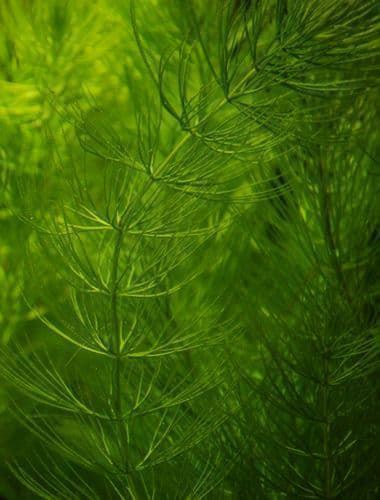
1.3.- ELEOCHARIS PARVULA:
Common name: Junquillo grass.
Origin: Europe, Africa and Cuba.
Description: It is one of the cold water aquarium plants that can give you more play. It is grass type, perennial. If you give it the optimal conditions, it will spread through the aquarium substrate covering the bottom like a grass or meadow. You can give your cold water aquarium an amazing aquascape look. It is a plant with very fine leaves, sensitive to clogging if there is a lot of debris floating in the aquarium. It is recommended to provide CO2. It requires contributions of iron through the substrate, which should preferably be fine. Plant in groups with a separation of 2 to 5 cm between bunches.
Maximum height: 15 cm.
Optimal parameters: pH from 5.5 to 7. gH around 10ºd.
Growth rate: Medium.
Aquarium area: Front or middle.
Lighting: Very strong, more than 0.8 watts.
Temperature: 20 to 28ºC.
Reproduction: Seeds or creeping stolons.
Difficulty: Medium.
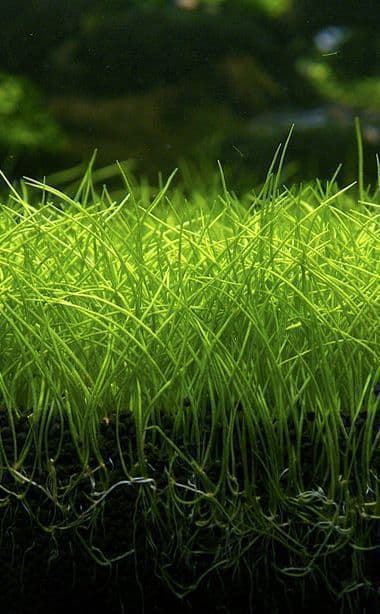
1.4.- GYMNOCORONIS SPILANTHOIDES:
Common name: Sword Blade.
Origin: South America.
Description: Easily confused with Hygrophila corymbosa, but in the case of G. spilanthoides the leaves are more flexible and less fleshy. At the time of planting, a certain distance must be left between the stems, since they grow quite a bit. The plant produces leaves on the surface of the water. It adapts relatively easily to different parameters. You can find a red variety and a green one.
Maximum height: 50-60 cm.
Optimal parameters: pH from 6.5 to 7.5. gH from 5 to 15ºd. It adapts to harder and alkaline waters.
Growth rate: Medium to very fast, depending on conditions.
Aquarium zone: Bottom or middle.
Lighting: High.
Temperature: 18 to 26ºC.
Reproduction: Stem cuts and side shoots.
Difficulty: Low to medium.
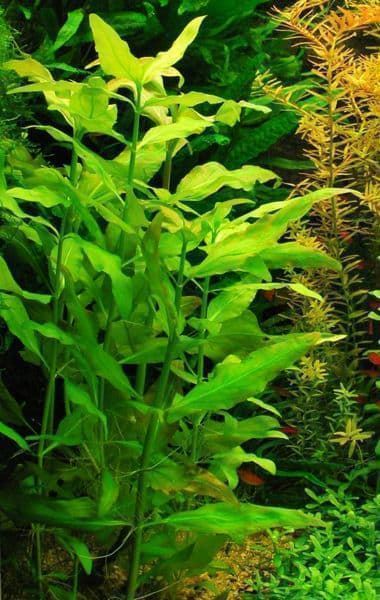
1.5.- POTAMOGETON CRISPUS:
Common name: Water curls.
Origin: All temperate regions.
Description: The appearance of this cold water aquatic plant is that of an algae, due to the curly shape of its leaves (which reach 10 cm and can take colors from dark green to red). It needs a substrate rich in iron and very good lighting.
Maximum height: 70 cm.
Optimal parameters: pH between 7 and 8.
Growth rate: Fast.
Aquarium zone: Bottom or middle.
Illumination: High to very high.
Temperature: 12 to 20ºC. It is very important that it does not exceed 20ºC, otherwise it will weaken and die. They are plants for cold water aquarium exclusively.
Reproduction: Lateral shoots and stem cuttings.
Difficulty: Medium/High.
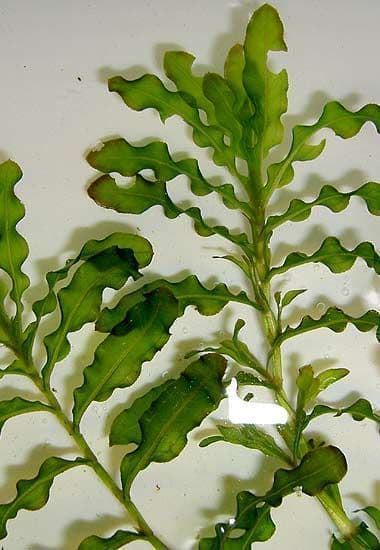
1.6.- HYDROCOTYLE VERTICILLATA:
Common name: American cap.
Origin: North and Central America.
Description: Plants for cold water aquariums with no special maintenance requirements, except for good lighting. It has circular leaves up to 3 cm in diameter. With continuous pruning you can get the plant to expand densely and with leaves of different sizes. The effect you can get playing with pruning is incredible.
Maximum height: 15-25 cm.
Optimal parameters: pH from 5.5 to 7.5. gH between 5 and 12ºd.
Growth rate: Medium/high.
Aquarium zone: Front or middle.
Lighting: High to very high (0.7-1Wtt per litre).
Temperature: 20 to 25ºC.
Reproduction: Shoots.
Difficulty: Medium.
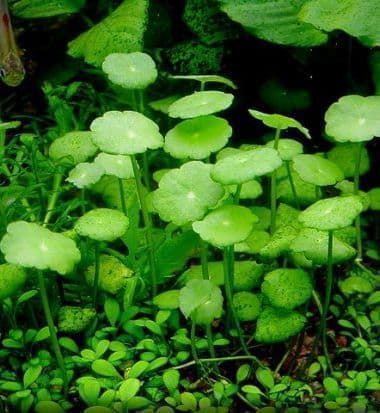
1.7.- VALLISNERIA SPIRALIS:
Common name: Vallisneria Estrecha.
Origin: Subtropical to tropical regions of the world.
Description: It has the typical appearance of all the species of the Vallisneria genus: leaves organized in bunches, in the shape of ribbons and a bright green color. They form dense vegetal curtains in the last plane of the aquarium. It is resistant to a wide range of conditions, and is perfect for beginners. The leaves come together in a "rosette" from which the roots emerge. The rosette must be left uncovered when we plant the Vallisneria, to prevent it from rotting.
Maximum height: 60 cm.
Optimal parameters: pH from 6.5 to 7.5. gH from 3 to 30ºd.
Growth rate: Fast.
Aquarium area: Bottom.
Lighting: Moderate, although it grows better in high lighting. With low lighting the plant adapts, but the daughter plants will not develop.
Temperature: 15 to 29ºC.
Reproduction: Stolons and daughter plants.
Difficulty: Low.
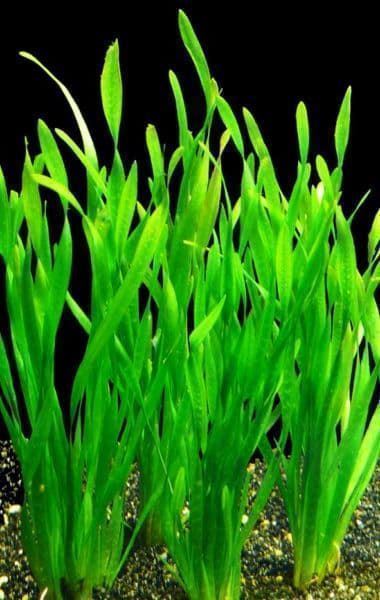
1.8.- NUPHAR JAPONICA:
Common name: Japanese water lily.
Origin: Japan.
Description: It needs contributions of macro and micronutrients. Introduce CO2 only if you have strong enough light. It has bright green triangular leaves. They will contrast greatly with the rest of the plants in the aquarium, creating incredible visual effects. Ideally, it should be planted in the middle of the tank with plenty of space around it (which can provide softer water, which is better for the plant). Remove old leaves that are dying.
Maximum height: The stems usually reach the surface, and the leaves grow 15 cm. The idea is to provide very intense light so that the stems do not grow to the surface, leaving the leaves inside the aquarium.
Optimum parameters: pH from 5 to 6. gH from 4 to 18ºd. Better soft water.
Growth rate: Medium.
Aquarium zone: Bottom or middle.
Lighting: High.
Temperature: 18 to 25ºC.
Reproduction: Shoots that are born in the rhizome, which is quite large.
Difficulty: Medium.
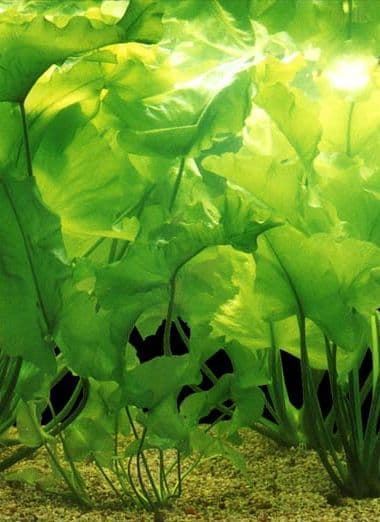
1.9.- SAGITTARIA PLATYPHYLLA:
Common name: Giant Sagittaria.
Origin: North America and Southeast Asia.
Description: Slow growing cold water aquatic plants not very tall (despite the name). It has ribbon-shaped leaves. It is easy to maintain, but an iron supply will be necessary through regular fertilization, either through the water column or through the substrate. Over time, this incredible species produces a plant mat on the aquarium substrate.
Maximum height: 20 cm.
Optimal parameters: pH between 5.5 and 7.5. gH between 1 and 12ºd, preferably soft water.
Growth rate: Slow to medium.
Aquarium area: Front or middle.
Lighting: High.
Temperature: 18 to 26ºC.
Reproduction: By stolons.
Difficulty: Medium.
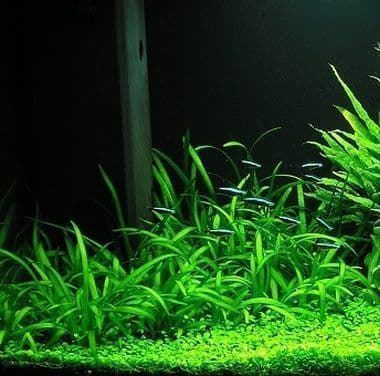
1.10.- LUDWIGIA PALUSTRIS:
Common name: Broadleaf Ludwigia.
Origin: USA Currently distributed in Africa, Europe, Asia...
Description: Plants for highly resistant cold water fish tanks. It adapts to almost any condition as long as it is provided with good lighting. It is planted in bunches. It has reddish-green leaves, which grow close together at the tips of the stems, near the surface, where the light is brightest. With proper pruning you get it to produce side shoots. This gives the plant a very bushy appearance. Perfect as a refuge for many types of fish.
Maximum height: 50 cm.
Optimum parameters: pH 6.5 to 7.5. gH
Growth rate: Medium.
Aquarium area: Bottom and middle.
Illumination: High to very high.
Temperature: 18 to 26ºC. Preferably fresh water.
Reproduction: Shoots and stem cuttings.
Difficulty: Medium.
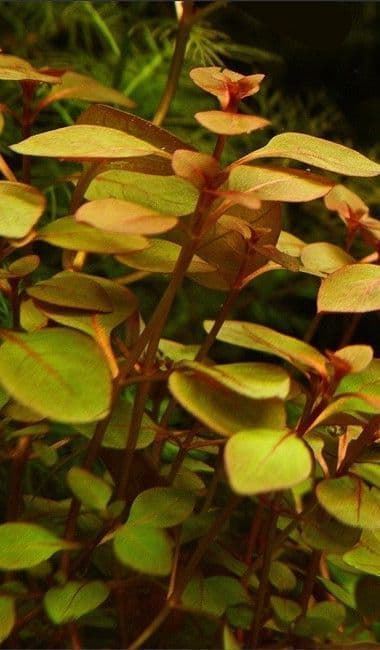
1.11.- LYSIMACIA NUMMULARIA:
Common name: Coin plant.
Origin: Japan, Europe and North America.
Description: Natural plants for cold water aquariums and pond edges. In its habitat it is usually found partially submerged or in flooded soils. Does not grow well in tropical aquariums. Tolerates a wide range of conditions, but needs good lighting. The leaves are similar in shape to clover, and are green-yellow in color, with powerful lighting and CO2. It is a fragile plant that must be handled carefully.
Maximum height: 40 cm.
Optimum parameters: pH from 6 to 8. gH from 6 to 18ºd, preferring hard water.
Growth rate: Medium.
Aquarium zone: Front or middle.
Illumination: High to very high.
Temperature: 15 to 22ºC.
Reproduction: Stem cuts.
Difficulty: Medium.
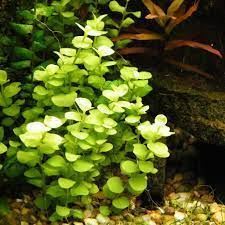
2.- HOW TO PLACE COLD WATER PLANTS IN THE AQUARIUM:
At Glu Glu Pet we recommend some ideas on how to place these natural plants for cold water aquariums, as an example we offer you this interesting configuration proposed by Hiscock:
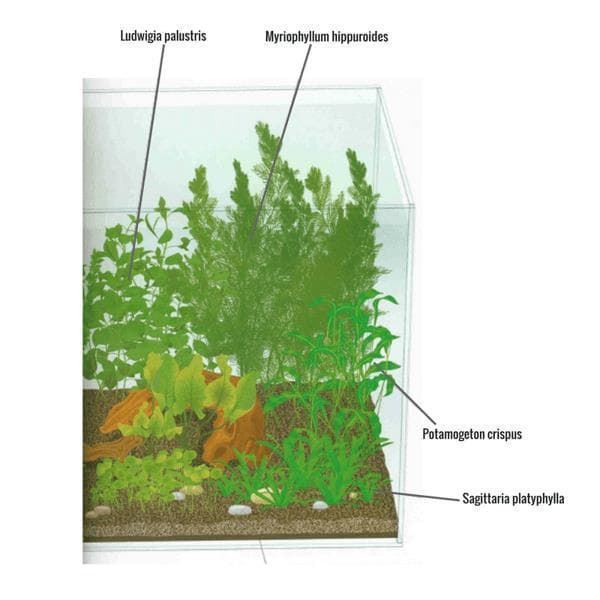
This amount and configuration of plants would work well for an aquarium with the following measurements, approximately: 38 x 38 x 75 cm (height x width x length).
The conclusion is: a cold water aquarium can be just as well planted as a tropical one, if you know how to choose the species and their spatial configuration well.
You can also apply the rules of Aquascaping to achieve spectacular planted aquarium designs, in the purest Takashi Amano style, at Glu Glu Pet we have experience and Aquascaping products if you want to try this aquatic landscaping, this exciting modality.
At Glu Glu Pet we recommend the best way to put your cold water plants in the aquarium, ask us and we will be happy to help you.
Other articles that may interest you:
- Diseases of the Drunken Fish.
- Varieties of the Pez Borrachito.
- The Lemon Tetra is one of the most beautiful fish for a community aquarium.
- Chinese neon or White Cloud Mountain fish, named for its place of origin in southern China.
- Black neon tetra.
- Neon Tetra or Neon Innesi, is a warm and fresh water fish.
- drunk fish.
- The best care of the Tetra nun.
- Aquarium maintenance.
- What do you need to have your first aquarium.
- The best tropical freshwater fish recommended for beginners.
- The best aquarium plants for beginners that you should know.
- The best groundcover plants for your aquarium.
- The best substrates for a planted aquarium.
- Aquascaping for beginners.

